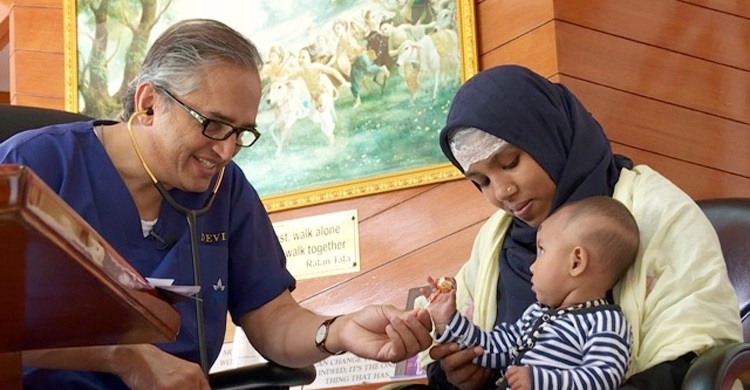54% of medical tourists in India were from Bangladesh

A huge majority of medical tourists — 54.3% — who visited India last year were from Bangladesh, followed by 9% from Iraq, 8% from Afghanistan, 6% from the Maldives and 4.5% from a group of African nations, data released by the Union tourism ministry shows.
Most of these patients come to India seeking complex heart surgeries and cancer care, said Dr Devi Shetty, a member of National Medical and Wellness Tourism Promotion Board. Since the pandemic hit, visitors have been few and far between and Dr Shetty said it would take months for the sector to get back on track.
“India is a cheap healthcare destination and hospitals here are known for quality treatment,” Dr Shetty said. The government of India’s decision to extend e-medical visas to 166 countries has helped needy patients from abroad reach out to Indian hospitals. Dr Shetty said besides excellence in medical care, what attracts Bangladeshis to India is similarities in food, language, affordable treatment, and cultural comfort.
Data from the Union ministry of tourism shows Bangladesh accounted for 23.6% of medical tourists in 2009, while the Maldives had the highest share at 57.5%. While Bangladesh’s share increased, that of the Maldives went down. In 2019, Bangladeshis made for 57.5% of medical tourists and Maldivians 7.3%. The share of Afghans who comprised 10.7% of the international patients in 2009 in India increased to touch 14.3% in 2016 before slumping to 4.7% in 2019.
Stakeholders say direct flight connectivity largely determines destinations. Dr Manish Mattoo, vice-president, Fortis Healthcare, said, “While Delhi and Mumbai get most patients from West Asia and Bangladesh, Chennai draws people from the Maldives, Sri Lanka and Mauritius. Most medical tourists to Bengaluru are from African nations, Bangladesh and West Asia.”
Dr Mattoo said in terms of cost, foreign patients pay a 20% premium compared to Indian patients. This comes with an ecosystem that’s set up to take care of them. “Foreign patients get complete support from hospitals right from their arrival at the airport to lodging, treatment, and even cuisines of their choice, besides translators to help them throughout,” said Dr Mattoo.
Earlier this month, a 27-year-old woman from Kabul underwent a bowel transplant at Bengaluru’s Fortis Hospital. The patient was suffering from short bowel syndrome and an inherited condition of blood clotting. She was completely dependent on intravenous administration of nutrition. Last year, the woman developed severe abdominal pain and complications in her small intestine because of which doctors in Afghanistan removed her small intestine. The family was shattered when doctors told them she had minimal chances of survival, so they came to India seeking help.
The kind of treatment foreign patients look for has changed with time. Dr Mattoo said in 2016-17, there was a huge inflow of patients from Iraq and Yemen, mostly men injured in war. By late 2018, such cases plateaued. In 2019, most patients were seeking liver transplant and brain surgeries.
In February this year, a special chartered aircraft flew in 21 patients from Myanmar to Apollo Hospitals, Delhi. “Most of them were seeking kidney and liver transplants,” said Dr Harinder Sidhu, vice-president, Apollo Hospitals. “They were accompanied by donors and caretakers. Medical tourism has not completely stopped even during the pandemic.”
Dr Sidhu revealed several Bangladeshis traveled by bus to Kolkata in October 2020 and were later brought to Chennai for treatment. Post-Covid, many hospitals catering to foreign patients through dedicated international desks have been getting enquiries, but travel restrictions are a stumbling block.
Dr Devi Shetty said it would take at least 3-6 months for medical tourism to hit its stride. “For flights to resume, for the embassies to issue medical visas, it would take time. Currently visas are being issued only in case of emergencies. For medical tourism to resume, the pandemic situation in those countries and in India matters,” he said.
Source: Times of India



